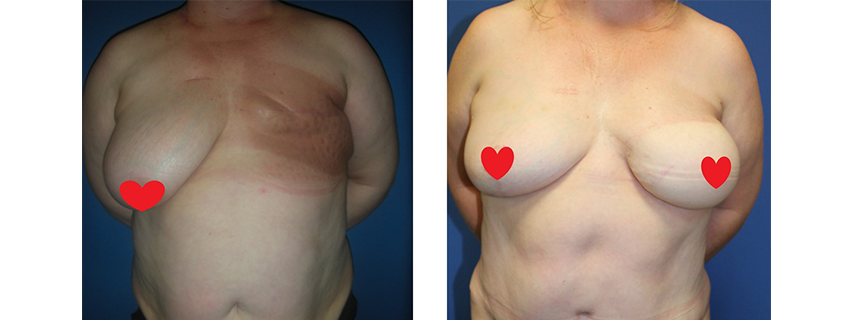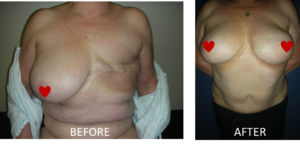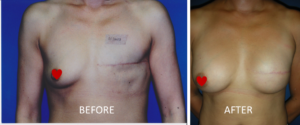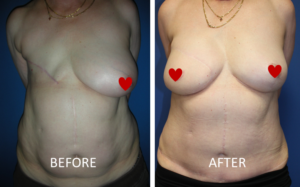
Dr Damian Marucci, Plastic and Reconstructive Surgeon based in Kogarah, Sydney, says breast reconstruction for women after cancer is one of the most important parts of his practice. One in eight women are diagnosed with breast cancer before they turn 85 and a common part of the process in the fight to survive breast cancer is removing one or both breasts. Dr Marucci has extensive experience and training in performing all the different breast reconstruction options after a mastectomy and talks us through what’s involved.
Different breast reconstruction techniques

“Free flap” procedure
Dr Marucci is an expert at the “free flap” procedure. This is where the tissues of the abdomen are used to construct a breast that feels and looks natural. It also means the patient can have a reconstruction without having to have implants. Dr Marucci explains further. “This type of reconstructive microsurgery involves using the tissue which would otherwise be thrown away as part of a tummy tuck to recreate a breast. The blood vessels supplying the skin and fat of the tummy are joined under the microscope with blood vessels in the chest so this “flap” of tissue survives in its new location. The patient has the benefit of not only having her breast (or breasts) reconstructed, but also gets an improved abdominal contour through a tummy tuck. This makes for a dramatic transformation of their body after surviving the ravages of cancer”. The breast reconstruction “flap” can be further modified down the track to reconstruct a nipple.
A free TRAM or DIEP flap is a big operation however. The surgery can take anywhere between 5 – 8 hours. Patients are usually in hospital for a week or so and then can’t do any heavy lifting for a month. Patients are advised to have at least 3 weeks off work if possible.
Breast implants after a mastectomy


For patients who have already had a mastectomy and would like an implant based “delayed” reconstruction, often the plastic surgeon will need to place something called a “tissue expander” into the area first. This is because there is not enough loose skin to simply open the scar and place an implant. An expander is like an empty implant that is slowly filled with fluid over a period of weeks to months. This stretches (or “expands”) the skin and soft tissue of the chest. At a second procedure, the expander is removed and a implant is placed.
Patients who have had radiotherapy following their mastectomy are a bit trickier to reconstruct. Whilst radiotherapy is really effective in killing cancerous cells, it also damages healthy tissue, so the tissue normally used in a breast implant reconstruction may not heal well. Dr Marucci says there is a way around this. “If a patient has had previous radiotherapy and still desires the advantages of a breast implant reconstruction, a muscle from the back can be used to cover the breast implant. This leaves a scar on the back, but it decreases the chance of the implant becoming exposed or infected. This obviously is a larger surgical procedure and results in extra scars etc, but it is a safer and more effective form of reconstruction after radiotherapy.”
Breast Reconstruction Recovery
Dr Marucci says the recovery depends on the procedure. “Recovery depends on the type of reconstruction performed. Implant based reconstructions have a faster recovery. Patients can’t shower until the drains are removed and may need to wear a sports bra with no underwire for a few weeks. Free flap reconstruction with an abdominal flap means no heavy lifting for a few weeks and wearing a binder.”
Whichever procedure a patient chooses, having a reconstruction after a mastectomy can be an important part in the process with regards to moving on and leaving the whole cancer experience behind. Dr Marucci says he loves helping women restoring their confidence after already going through so much. If you’d like to arrange a consult you can contact Dr Marucci’s clinic on (02) 9588 6374. Check out a real story with a real life patient who had breast reconstruction after a mastectomy with Dr Marucci below:
Real Story – Tina’s bilateral breast reconstruction and free TRAM flaps
